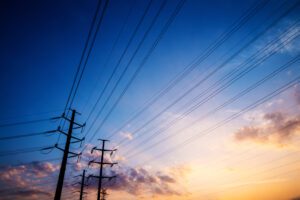If Green Port congress is well known by the industry in Europe, shifting it to Asia was a challenging bet. But about 110 delegates from global ports, terminal operators, shipping lines, consultants, contracting companies, research centers, governmental bodies and associations attended the event held in Mumbai from March 20th to 22th. The participants were there to engage in serious debates which lead to a very productive conference! Speakers from thoughout the world (but mostly from Europe to Asia) assured that this international congress did what it set out to do… share innovation and technology trends that make ports and the shipping industries greener.
The two-day technical conference featured presentations and papers providing evidence of actions, from India and other international ports, that demonstrates that Green port is a trend that is going from concepts to reality! And Shore Connection technology was at the center of the discussions, as it remains the best alternative to cutting ships emissions at berth.
“Marco Polo, the European Union’s funding Program for Modal shift should be introduced by the Indian Government,” said Capt. B.V.J.K Sharma, Joint Lanaging Director & CEO, JSW Infrastructure on the first day. As a reminder, Marco Polo program gives priority to projects that include new and green solutions. As part of the new Marco Polo guideline, projects like Shore Connection will have the priority.
As part of Indian regulation framework, Capt Sharma added, “Port developers and operators could do their part by incentivizing modern ships shifting from diesel genset to electricity for port operations and usage of renewable.” In fact, the consensus among the delegates is that the lack of global regulation and financial incentives actually lowers the priority for ports to make sustainability priority major concern. Nevertheless, some countries are creating severe, but successful, regulations to definitive action to tackle shipping emissions. For example next year in the United States, ships not equipped to use shore connection will be unable to berth in a Californian port. But Asia is not lagging behind: China, for example, has already issued a technical code to apply shore connection in every new terminal.
However, regulations are not the only option. Volunteering frameworks can also lead to change. Jamie Simpson, Vice President for ICF International, gave a really good example of a Hong Kong initiative: “In the Asia port scenario, with Hong Kong as focus, the shipping industry has become the major source for sulphur dioxide emissions amounting to 54% followed by nitrogen oxide at 33% and Particulate Matter at 38%. In Response to the high emissions level, Hong Kong has adopted the Fair Winds Charter on January 2011 that espouses voluntary agreement by shipping lines to switch to low sulphur fuel at berth and funding for on shore power supply facilities at new Kai Tak Cruise terminal”.



